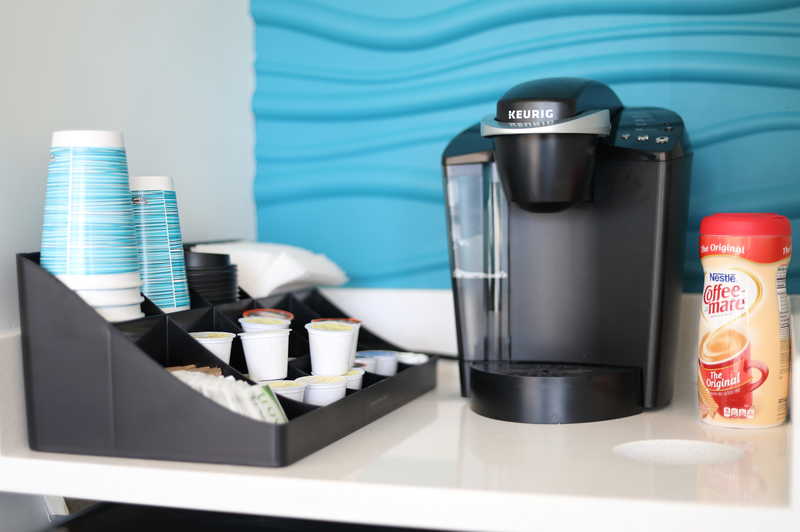There are several ways on how to clean mold from Keurig water reservoir. You can use vinegar, baking soda, or commercial products. Learn about the non-commercial options of cleaning mold in this article!

Mold On Keurig Water Reservoir
Drink dispensing devices are prone to mold growth because of the amount of moisture that stays within them. Unsurprisingly, this involves your favorite Keurig coffee maker.
What Is Keurig?
Keurig coffee makers are well-known and you can find them in almost every household. Keurig’s average lifespan is about five years, but it may even last longer if you use them properly.
If you are experiencing problems with your relatively new coffee maker, contact your manufacturer. Keurig’s manufacturer has a one-year guarantee, and you may be able to use it.
How does mold grow in a Keurig water reservoir?
Mold grows in a Keurig water reservoir due to the water that sits in the container for a long period. Combined with the reservoir’s material, it becomes an easy victim of mold.
Repeat use of unclean cups may also lead to mold growth. It may even result in health problems.
Another reason for mold growth is standing water in the placement tray. Since water and coffee drain into the tray, leaving it unattended will inevitably result in mold.
What are the tell-tale signs of mold growth in a Keurig water reservoir?
If you want to inspect whether your Keurig has mold, here are some of the telltale signs:
If you experience mold allergy symptoms like sneezing and headaches, then maybe there is mold in your coffee maker. Mold spores are everywhere and once it forms in your Keurig, it will emit more spores. To kill mold spores, here is an article about eradicating airborne mold spores that may help you.
A more obvious sign of mold contamination is visible growth on your Keurig’s water reservoir or placement tray. Another sign of mold is a foul odor, if you smell such on your machine, then it’s time to check.
Cleaning Mold From Keurig Water Reservoir
Step #1. Check if it is dishwasher-safe
Look at the embossing and check your water reservoir if it’s dishwasher safe. If it is, run it through your dishwasher. While the dishwasher-safe parts are being washed, you can clean the other components by hand.
Step #1.2 Not dishwasher-safe
If your water reservoir is not dishwasher-safe, then use diluted vinegar as an alternative instead. First, mix equal parts of water and vinegar in the container. Then, let the diluted solution sit for a few minutes.
Step #2. Scrub
After soaking the reservoir with the mixture, scrub the interior and bottom sides of the water reservoir with a round-tipped brush. Doing this will help clean the water intake hole and the container.
You can also use baking soda paste to clean mold from the Keurig water reservoir. Let the paste sit on the container first, then scrub it thoroughly as well.
Step #3. Run through the machine
Remove the K-cup. Then, use either the diluted vinegar or baking soda paste and run the machine.
If this is the first time you are cleaning your Keurig, repeat this process until there is no more mold. If you have a large water reservoir, then run several clean water cycles through your Keurig.
Step #4. Rinse
For good measure, rinse the reservoir multiple times to get the vinegar out of the container. The baking soda paste is pretty easy to remove; so, it won’t need as much rinsing.
If you want an alternative to the vinegar and baking soda method, use coffee descaler products instead. Make sure to follow the product’s instructions thoroughly.
Ways to take care of Keurig water reservoir
Mold in any drink dispensing device is potentially dangerous. The prominent reason for that is it may lead you into drinking coffee with mold.
If you think you accidentally drank mold, here’s an article about what happens after drinking mold that may help you. The mold-related article will also inform you about the warning signs of mold growth in your drink.
Anyway, to effectively prevent mold growth, you have to be careful in handling your Keurig. Here are some ways to care for your coffee maker.
Leave the lid open
To prevent mold growth, you have to encourage airflow in your machine. One way of doing that is leaving the lid open when you’re not using it.
Clean the platform tray
Another cause of excess moisture is the platform tray because of the water and coffee that drains in it. The water and coffee result in gunk later on, which leads to mold as well. Clean the platform using dish soap and a damp cloth.
Wipe down
Wipe the inside of the coffee maker after use. Use a paper towel to dry it and ultimately prevent mold growth.
Clean cups
Even if you are too lazy to change your cups, always use clean ones. Using dirty cups would be inviting mold into your drink, which could impact your health as well.
Conclusion
Learning how to clean mold from Keurig water reservoir is a sure-fire way of preserving your machine’s lifespan. Another way is preventing mold growth, which we included in this article.
